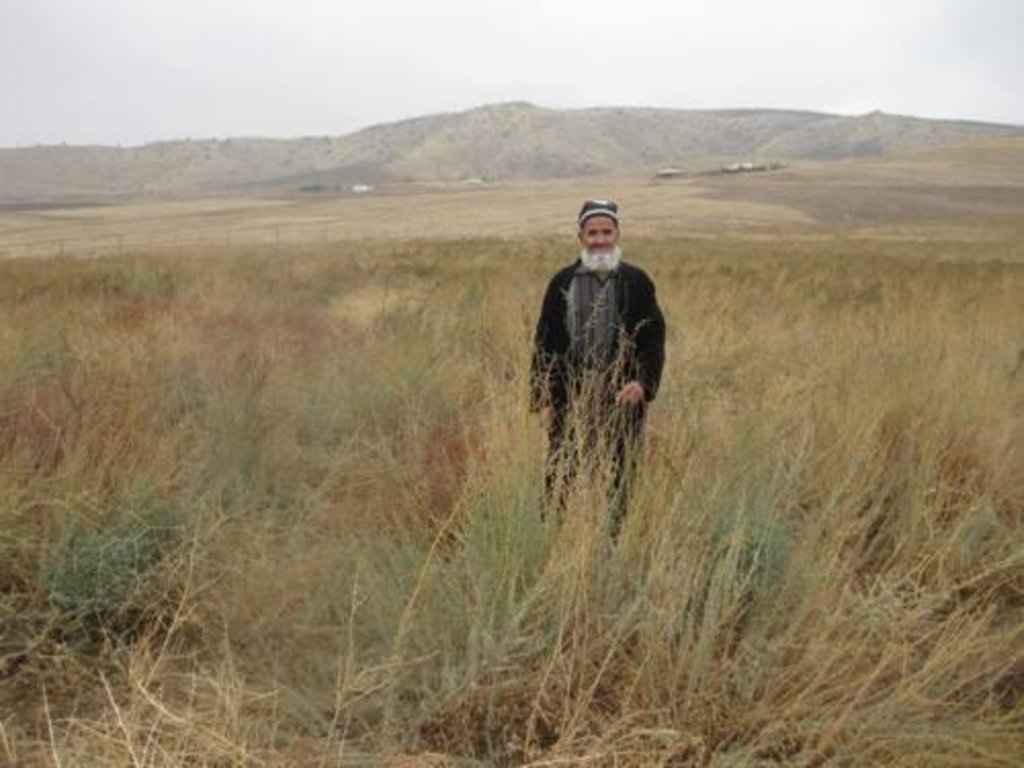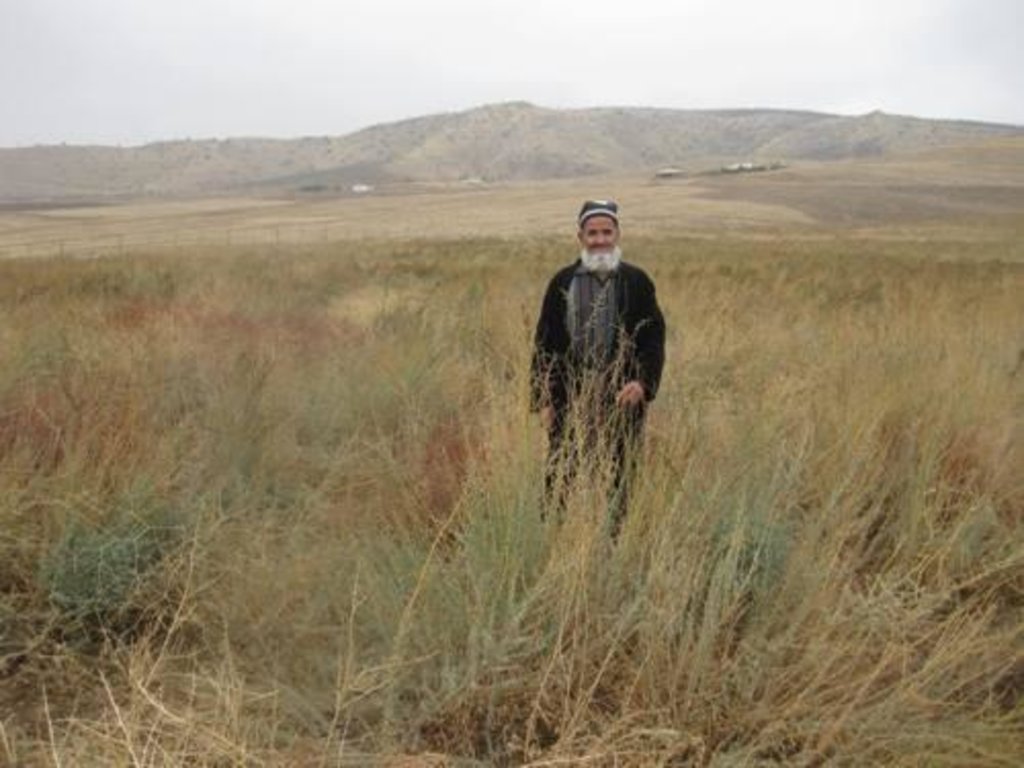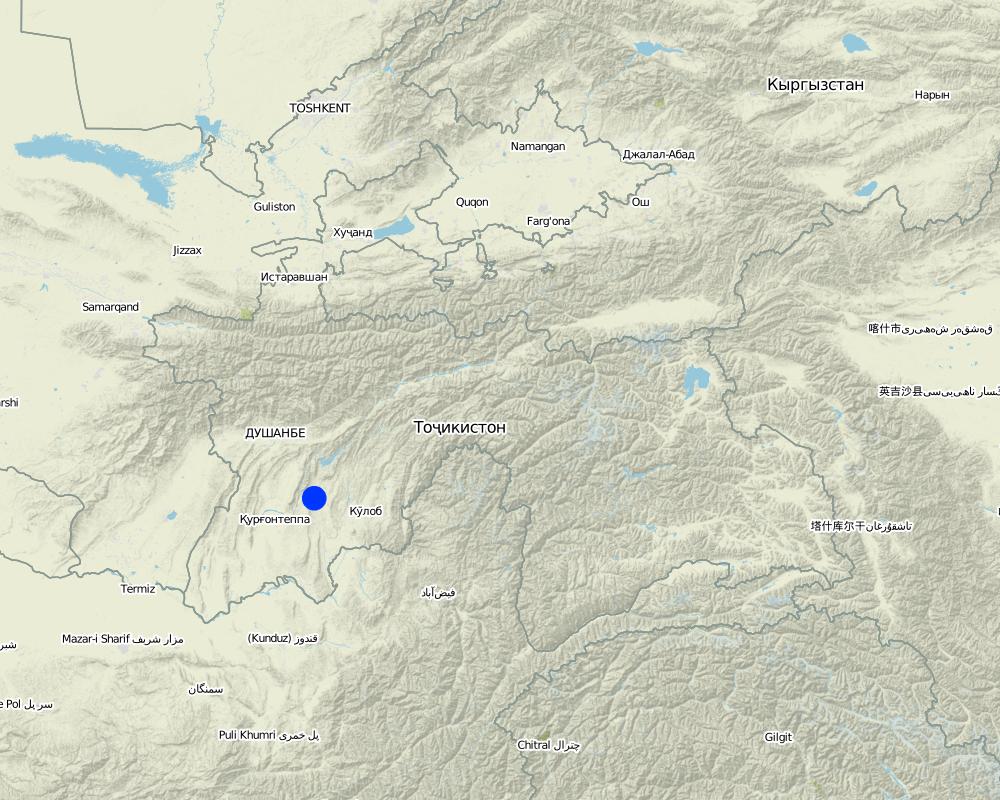Восстановление пастбищных угодий посредством семян многолетного кустарника [Tajikistan]
- Creation:
- Update:
- Compiler: Tuychiboy Safarov
- Editor: –
- Reviewers: Alexandra Gavilano, Fabian Ottiger
technologies_1053 - Tajikistan
- Full summary as PDF
- Full summary as PDF for print
- Full summary in the browser
- Full summary (unformatted)
- Восстановление пастбищных угодий с использованием семян многолетного кустарника: Nov. 2, 2021 (public)
- Восстановление пастбищных угодий с использованием семян многолетного кустарника: Aug. 7, 2017 (inactive)
- Восстановление пастбищных угодий с использованием семян многолетного кустарника: Aug. 15, 2019 (inactive)
- Восстановление пастбищных угодий посредством семян многолетного кустарника: Junie 3, 2017 (inactive)
- Восстановление пастбищных угодий посредством семян многолетного кустарника: Des. 27, 2016 (inactive)
View sections
Expand all Collapse all1. General information
1.2 Contact details of resource persons and institutions involved in the assessment and documentation of the Technology
United States
Name of the institution(s) which facilitated the documentation/ evaluation of the Technology (if relevant)
World Bank (World Bank) - United States1.3 Conditions regarding the use of data documented through WOCAT
The compiler and key resource person(s) accept the conditions regarding the use of data documented through WOCAT:
Ja
2. Description of the SLM Technology
2.1 Short description of the Technology
Definition of the Technology:
Улучшение пастбищ путем посева изена
2.2 Detailed description of the Technology
Description:
Улучшение пастбищ путем посева изена в неиспользуемых земель для улучшение состоянии пастбищ, увеличение кормовой базы.
В целом, пастбища водосбора Тоирсу в значительной мере деградированы, из-за перевыпаса и вызываемая им пастбищная дигрессия. На горных склонах около половины площади пастбищ превратились в тропинки, плешины и кочек. Почвы здесь часто смыты, каменисты и щебнисты; Пастбища расположение на крутых склонах, особенно около населенные пункты сильно деградированы и засорены ядовитыми и колючими растениями. Здесь нерегулируемый выпас скота проводятся ежедневно и ежегодно в течение весенне-летне-осеннего периода или круглый год. Из-за перевыпаса травостой сильно разрушен, пятнами растут низкорослая пырей ползучий (аджирек), почва подвержена водной эрозией, образовались многочисленные овраги и др.
Нерегулируемый выпас не только влияет на состав пастбищного травостоя, но в значительной мере изменяет и характер экологической обстановки. При длительном выпасе уплотняется или, наоборот, разрушается почвенный покров и порождается особые формы «пастбищного микрорельефа». В результате водопроницаемость почвы снижается, сток воды усиливается, стекающие по уклону массы воды вымывают мелкозем, гумус и минеральные питательные вещества. Что приводит к снижению плодородия почвы. В результате, при значительной валовой урожайности травостоя они имеют крайне малый запас поедаемой травы, что ограничивает количество выпасаемых здесь животных. В связи с этим необходимы дополнительные меры экологической оптимизации пастбищ.
При поддержке проекта и инициатива местной группы общего интереса (ГОИ) было выбрано неиспользуемые земли в джамоате Лохур Дангаринского района для посева изеня (Kochia) на площади 5 га. Основной целю идеи была в улучшение состояние пастбищ, предотвращение ветровой, водных эрозий, путём посева полукустарника изень. При 100%-ной всхожести нормы семена на одного гектара составляет 6-8 кг. По технологии семена выбирается после лабораторного анализа. С целью экономии горючего и финансовых затрат одновременно было проведено вспашки земли в глубине 25 – 30 см и боронование посеяно семена
полукустарника изень в глубине 0,5-1,0 см. Было использовано семена сорт«Ќуйканак». После посадки семян вокруг земли было ограждено металлическим ограждением. Этот сорт семян устойчив до +40С температур. Для климатических условиях Дангаринского района данной полукустарник соответствует. В течение года распускает корни до 80-150см
Purpose of the Technology: Основной целю идеи была в улучшение состояние пастбищ, предотвращение ветровой, водных эрозий, реабилитации засолённых почв, сохранение влажности почв, увеличение кормовой базы скота. обогащение состав почв нитратами, сбор и продажа семян и улучшение средств жизниобеспечения. Улучшение условий для земледелия, увеличение и создание устойчивости почв к деградации. Создание благоприятных социально- экономических и экологических условий для сельско населения
Establishment / maintenance activities and inputs: Для начало было создано ГОИ (гурупаа общего интреса), проведено семенар об использованые данного технологии. На данном семинаре было предложено идея об улучшении продуктивности пастбищных угодий. Членами ГОИ было выбрано пастбищное земел джамоата Лохур в 5 га. Соглано Проекта 20% финансирования в натуральном форме было обеспечена ГОИ. В начальном этапе было подготовлено замля под вспашкой. После лабораторного анализа семена изень блыло посеяно. Середняя продолжительность жизни изеня составляет 25-30 лет
Natural / human environment: Изень используется в основном для обогащения засушливых пастбищных угодий. Биологическое ценность изена отражается в том, что он хорошо переносить жаркие летные дни южного Таджикистана. В тоже время изень является выносливой культурой восточного Памира, где температура воздуха в зимнее время достигает до 40-45С мароза.
Данным участком сарпологает ГОИ которое имеет сертификат на право землепользования. В членство ГОИ входят представители 10 домохозяств. Они имеют равные доступ к кормового продукта, сема а также выпаса скота.
2.3 Photos of the Technology
2.5 Country/ region/ locations where the Technology has been applied and which are covered by this assessment
Country:
Tajikistan
Region/ State/ Province:
Таджикистан
Further specification of location:
Дангара, Лохур
Comments:
Boundary points of the Technology area: только приблизительные координаты
Map
×2.6 Date of implementation
If precise year is not known, indicate approximate date:
- 10-50 years ago
2.7 Introduction of the Technology
Specify how the Technology was introduced:
- during experiments/ research
Comments (type of project, etc.):
при правильном выпасе и правильном управлении пастбищем, технологию можно использовать на протяжении 25 лет
3. Classification of the SLM Technology
3.2 Current land use type(s) where the Technology is applied

Grazing land
Comments:
Major land use problems (compiler’s opinion): Предотвращение от ветренной и водяной эрозии, улучшение кормовой базы
Major land use problems (land users’ perception): Создана Группа людей с общими интересами (ГОИ)
Future (final) land use (after implementation of SLM Technology): Cropland: Cp: Perennial (non-woody) cropping
If land use has changed due to the implementation of the Technology, indicate land use before implementation of the Technology:
Grazing land: Gi: Intensive grazing/ fodder production
3.3 Further information about land use
Water supply for the land on which the Technology is applied:
- rainfed
Specify:
Longest growing period in days: 6
Longest growing period from month to month: 8
3.5 Spread of the Technology
Comments:
Total area covered by the SLM Technology is 0,05 m2.
3.6 SLM measures comprising the Technology

agronomic measures
- A1: Vegetation/ soil cover

vegetative measures
- V2: Grasses and perennial herbaceous plants

structural measures
- S1: Terraces

management measures
- M5: Control/ change of species composition
Comments:
Main measures: vegetative measures, management measures
Type of agronomic measures: более лучшее покрытие культур, ранняя посадка, минимальная обработка
Type of vegetative measures: разбросанный / рассредоточенныи
3.7 Main types of land degradation addressed by the Technology

soil erosion by water
- Wt: loss of topsoil/ surface erosion
Comments:
Main type of degradation addressed: Вв (Wt): потеря верхнего слоя почвы / поверхностная эрозия
Main causes of degradation: управление землеи, интенсивная эксплуатация населением
Secondary causes of degradation: управление с/х культурами (однолетние, многолетние, деревья/кустарники), чрезмерный выпас, землепользование, бедность / богатство
3.8 Prevention, reduction, or restoration of land degradation
Specify the goal of the Technology with regard to land degradation:
- prevent land degradation
- reduce land degradation
Comments:
Main goals: prevention of land degradation
Secondary goals: mitigation / reduction of land degradation, rehabilitation / reclamation of denuded land
4. Technical specifications, implementation activities, inputs, and costs
4.1 Technical drawing of the Technology
4.2 Technical specifications/ explanations of technical drawing
Этот засоленный участок был засеян изенем в феврале. На картинке показан изен 10 месяцев после посева
Location: Дангара, Джамоат Лохур. Дангара, Хатлон.
Technical knowledge required for field staff / advisors: средний
Technical knowledge required for land users: средний
Technical knowledge required for средний
Main technical functions: контроль рассеивающихся поверхностных стоков: удержание / улавливание
Secondary technical functions: улучшение земляного покрова, стабилизация почвы (например, с помощью корней деревьев против оползней)
Better crop cover
Material/ species: вспашка и посев изена
Quantity/ density: 8 кг в 1 г
Remarks: ограждение
Early planting
Material/ species: вторая половина февраля
Remarks: семена после лабораторного анализа
Minimum tillage
Material/ species: обработка и рыхление
Remarks: выравнивание
Scattered / dispersed
Vegetative material: Д: деревья / кустарники
Number of plants per (ha): 8 кг семян
Trees/ shrubs species: Семена изена
4.4 Establishment activities
| Activity | Type of measure | Timing | |
|---|---|---|---|
| 1. | обработка почвы | Vegetative | февраль |
| 2. | ограждение | Vegetative | |
| 3. | Выравнивание | Vegetative | |
| 4. | Посев | Vegetative |
4.5 Costs and inputs needed for establishment
| Specify input | Unit | Quantity | Costs per Unit | Total costs per input | % of costs borne by land users | |
|---|---|---|---|---|---|---|
| Labour | None | None | 1.0 | 69.0 | 69.0 | 100.0 |
| Equipment | None | None | 1.0 | 45.0 | 45.0 | 20.0 |
| Equipment | None | None | 1.0 | 20.0 | 20.0 | 20.0 |
| Plant material | None | None | 1.0 | 80.0 | 80.0 | 20.0 |
| Construction material | None | None | 1.0 | 285.6 | 285.6 | 20.0 |
| Total costs for establishment of the Technology | 499.6 | |||||
4.6 Maintenance/ recurrent activities
| Activity | Type of measure | Timing/ frequency | |
|---|---|---|---|
| 1. | Сенакос | Vegetative | |
| 2. | сбор | Vegetative |
4.7 Costs and inputs needed for maintenance/ recurrent activities (per year)
| Specify input | Unit | Quantity | Costs per Unit | Total costs per input | % of costs borne by land users | |
|---|---|---|---|---|---|---|
| Labour | None | None | 1.0 | 50.4 | 50.4 | 100.0 |
| Total costs for maintenance of the Technology | 50.4 | |||||
5. Natural and human environment
5.1 Climate
Annual rainfall
- < 250 mm
- 251-500 mm
- 501-750 mm
- 751-1,000 mm
- 1,001-1,500 mm
- 1,501-2,000 mm
- 2,001-3,000 mm
- 3,001-4,000 mm
- > 4,000 mm
5.2 Topography
Slopes on average:
- flat (0-2%)
- gentle (3-5%)
- moderate (6-10%)
- rolling (11-15%)
- hilly (16-30%)
- steep (31-60%)
- very steep (>60%)
Landforms:
- plateau/plains
- ridges
- mountain slopes
- hill slopes
- footslopes
- valley floors
Altitudinal zone:
- 0-100 m a.s.l.
- 101-500 m a.s.l.
- 501-1,000 m a.s.l.
- 1,001-1,500 m a.s.l.
- 1,501-2,000 m a.s.l.
- 2,001-2,500 m a.s.l.
- 2,501-3,000 m a.s.l.
- 3,001-4,000 m a.s.l.
- > 4,000 m a.s.l.
5.3 Soils
Soil depth on average:
- very shallow (0-20 cm)
- shallow (21-50 cm)
- moderately deep (51-80 cm)
- deep (81-120 cm)
- very deep (> 120 cm)
Soil texture (topsoil):
- coarse/ light (sandy)
Topsoil organic matter:
- low (<1%)
5.4 Water availability and quality
Ground water table:
> 50 m
Availability of surface water:
poor/ none
Water quality (untreated):
unusable
5.5 Biodiversity
Species diversity:
- low
5.6 Characteristics of land users applying the Technology
Market orientation of production system:
- subsistence (self-supply)
Off-farm income:
- 10-50% of all income
Relative level of wealth:
- poor
Individuals or groups:
- groups/ community
Level of mechanization:
- manual work
- mechanized/ motorized
Gender:
- women
- men
Indicate other relevant characteristics of the land users:
Land users applying the Technology are mainly disadvantaged land users
Difference in the involvement of women and men: Большая часть населения безработная
Population density: 10-50 persons/km2
5.7 Average area of land owned or leased by land users applying the Technology
- < 0.5 ha
- 0.5-1 ha
- 1-2 ha
- 2-5 ha
- 5-15 ha
- 15-50 ha
- 50-100 ha
- 100-500 ha
- 500-1,000 ha
- 1,000-10,000 ha
- > 10,000 ha
Is this considered small-, medium- or large-scale (referring to local context)?
- small-scale
5.8 Land ownership, land use rights, and water use rights
Land ownership:
- communal/ village
5.9 Access to services and infrastructure
health:
- poor
- moderate
- good
education:
- poor
- moderate
- good
technical assistance:
- poor
- moderate
- good
employment (e.g. off-farm):
- poor
- moderate
- good
markets:
- poor
- moderate
- good
energy:
- poor
- moderate
- good
roads and transport:
- poor
- moderate
- good
drinking water and sanitation:
- poor
- moderate
- good
financial services:
- poor
- moderate
- good
6. Impacts and concluding statements
6.1 On-site impacts the Technology has shown
Socio-economic impacts
Production
crop production
fodder production
Income and costs
farm income
Socio-cultural impacts
food security/ self-sufficiency
community institutions
SLM/ land degradation knowledge
situation of socially and economically disadvantaged groups
Ecological impacts
Water cycle/ runoff
surface runoff
Soil
soil moisture
soil cover
soil loss
soil compaction
Climate and disaster risk reduction
wind velocity
6.2 Off-site impacts the Technology has shown
wind transported sediments
damage on neighbours' fields
6.3 Exposure and sensitivity of the Technology to gradual climate change and climate-related extremes/ disasters (as perceived by land users)
Gradual climate change
Gradual climate change
| Season | Type of climatic change/ extreme | How does the Technology cope with it? | |
|---|---|---|---|
| annual temperature | increase | well |
Climate-related extremes (disasters)
Meteorological disasters
| How does the Technology cope with it? | |
|---|---|
| local rainstorm | well |
Climatological disasters
| How does the Technology cope with it? | |
|---|---|
| drought | well |
6.4 Cost-benefit analysis
How do the benefits compare with the establishment costs (from land users’ perspective)?
Short-term returns:
slightly positive
Long-term returns:
positive
How do the benefits compare with the maintenance/ recurrent costs (from land users' perspective)?
Short-term returns:
slightly positive
Long-term returns:
very positive
Comments:
Обрабатывают землю (1 раз), ограждают участок и посевают семена изена. Через год ограждение убирают. Технологию можно использовать в течении 25 лет.
6.5 Adoption of the Technology
Comments:
100% of land user families have adopted the Technology with external material support
10 land user families have adopted the Technology with external material support
Comments on acceptance with external material support: Данная технология была реализована при поддержки Всемирного Банка и ГОИ.
Comments on adoption trend: После реализации проекта, люди заинтересовались в посеве изена
6.7 Strengths/ advantages/ opportunities of the Technology
| Strengths/ advantages/ opportunities in the land user’s view |
|---|
| Может быть реализована на засолённых участках |
| Дополнительный доход для фермеров, продукция корма, продажа семян |
| Увеличение пастбищных территорий |
| Предотвращение эрозии почвы |
| Strengths/ advantages/ opportunities in the compiler’s or other key resource person’s view |
|---|
|
Данную технологию можно реализовать на участках, которые не пригодны для выращивания других культур. How can they be sustained / enhanced? Эффективное использование в течение 25 лет. |
|
Применение на засолённых участках, при разных климатических условиях, устойчивость к засухам How can they be sustained / enhanced? Через год ограждение можно убрать |
|
Увеличивает кормовую базу. Уменьшает нагрузку на пастбище How can they be sustained / enhanced? Распространение семян ветром на другие участки |
| Доход от продажи семян. Спрос на семян |
| Предотвращает водную и ветровую эрозию |
6.8 Weaknesses/ disadvantages/ risks of the Technology and ways of overcoming them
| Weaknesses/ disadvantages/ risks in the compiler’s or other key resource person’s view | How can they be overcome? |
|---|---|
| Первый год нужно охранять участок от скота | Необходимо оградить територии посева. |
| Ограждение требует денег | Можно за счет проекта и доноров. |
| первый год выпас ограничен |
Links and modules
Expand all Collapse allLinks
No links
Modules
No modules






